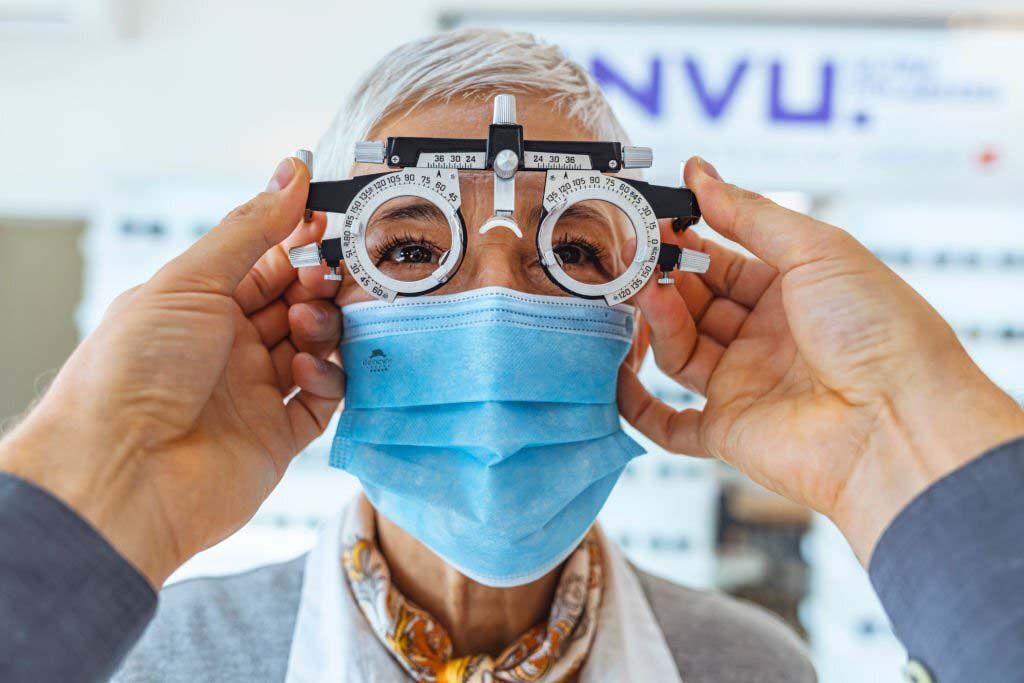This article is reviewed, corrected, and approved by: Dr. Benjamin McLean M.D. | FCPS | FRCP | MPH
In eyecare, OD and OS are abbreviations used to identify the right and left eyes, respectively. OD and OS are Latin terms used in the medical field to refer to the right and left eye, respectively.
These abbreviations are often used in prescriptions and eye exams/tests to indicate which eye each aspect of the prescription or exam applies to. These shorthand terms are commonly used in eyeglass prescriptions and other medical records to specify which eye is being referred to.
Science Behind OD and OS
When doctors prescribe spectacles regarding eye care for you, you might see the letters "OD" or "OS" followed by some numbers. Most people don’t know what it actually means.
The letters by your eyes show which is your right and left. The numbers next to them tell you how good your eyesight is. The "sphere" number tells you if you have trouble seeing things far away or up close.
The "cylinder" number measures something called astigmatism (a condition that causes blurred vision), which affects how well you see things that are not close up or far away. Astigmatism is measured by its axis number. All of these numbers will be listed on your prescription, so you can get the right glasses to help you see better.
Differentiating OD and OS
OD vs. OS
Definition And Origin of The Term "OS" (Oculus Sinister)
The term "OS" is derived from Latin and stands for "Oculus Sinister." In English, "Oculus Sinister" means the left eye." Like "OD," "OS" is widely used in the fields of optometry and ophthalmology to designate the patient's left eye specifically.
"OS" in eye care refers to the patient's left eye. It comes from the Latin term "oculus," meaning "eye," and "sinister," meaning "left." So, "Oculus Sinister" means "left eye" or "eye on the left side."
Definition And Origin of The Term "OD" (Oculus Dexter)
The abbreviation "OD" (Oculus Dexter) finds widespread usage in medical records and prescriptions within the fields of optometry and ophthalmology. Its primary purpose is to accurately identify and document information related to the patient's right eye. Let's explore the common applications of OD eye in medical records and prescriptions:
Patient Identification
OD is utilized to indicate the specific eye being referred to when documenting medical history, examination findings, and treatment plans.
Diagnosis and Treatment
OD eye helps healthcare professionals record diagnoses, conditions, and procedures that specifically pertain to the right eye. This ensures comprehensive and organized medical records.
Prescriptions
Eyeglass Prescriptions: OD is included in eyeglass prescriptions to specify the prescription requirements for the right eye. This ensures that opticians accurately prepare the correct lenses for the patient's right eye.
Contact Lens Prescriptions: OD is crucial in contact lens prescriptions, guiding the manufacturing of lenses designed specifically for the right eye. It specifies the power, base curve, and other relevant details for the contact lens.
Diagnosis and Treatment of OD

Eye specialists document diagnoses, conditions, and procedures that specifically relate to the patient's left eye using OS, ensuring comprehensive and organized medical records.
Diagnosis and treatment of OD (right eye) involve specific procedures in optometry and ophthalmology:
Diagnosis of OD
- Visual acuity testing
- Refraction to determine lens power
- Comprehensive eye health evaluation
- Diagnostic imaging for detailed eye structure assessment
Treatment of OD
- Vision correction with eyeglasses or contact lenses
- Medications for eye conditions
- Laser surgery, cataract surgery, etc.
- Continual monitoring and modifications to the treatment plan.
Frequently Asked Questions
Q 01: Is OD left or right eye?
Ans: OD stands for the "right eye."
Q 02: What is an Anti-reflective coating?
Ans: Eyeglass lenses can be coated with a thin film called anti-reflective coating to lessen glare and enhance clarity.
Q 03: What is the oculus uterus, and what is it used for?
Ans: "Oculus uterque" is a Latin phrase that doctors use in their notes to indicate that a treatment or condition applies to both eyes. The term means that whatever they're prescribing or discussing is relevant to both eyes.
Q 04: What are Photochromic lenses and Progressive lenses?
Ans: There are some glasses that automatically darken when you go outside and then become clear again when you go back inside; those are called photochromic lenses.
Another type of lens to think about is called a progressive lens. They are great for correcting your vision at different distances without a visible line, like you might see in regular bifocal glasses.
The Bottom Line
It's really important for eye doctors and people with eye issues to tell the difference between the right eye and the left eye (OD and OS). They use these abbreviations on medical records and prescriptions to make sure everyone knows which eye they're talking about.
Getting it right means they can figure out what's wrong and treat it properly, and everyone can understand what's going on. Knowing what OD eye and OS eye mean makes sure everything gets recorded correctly, and the patient gets the best care possible.


